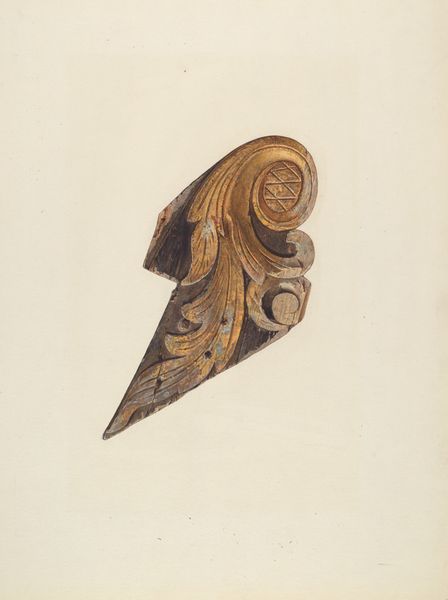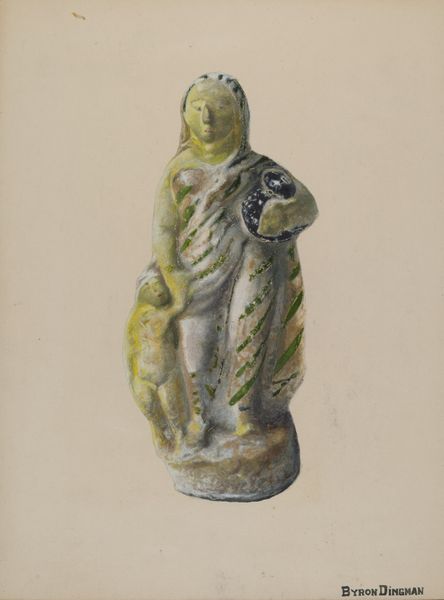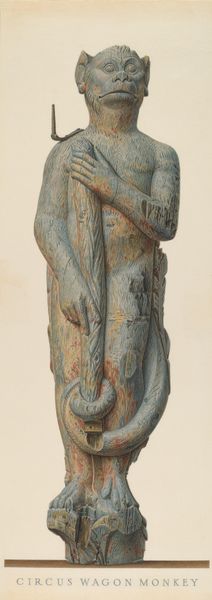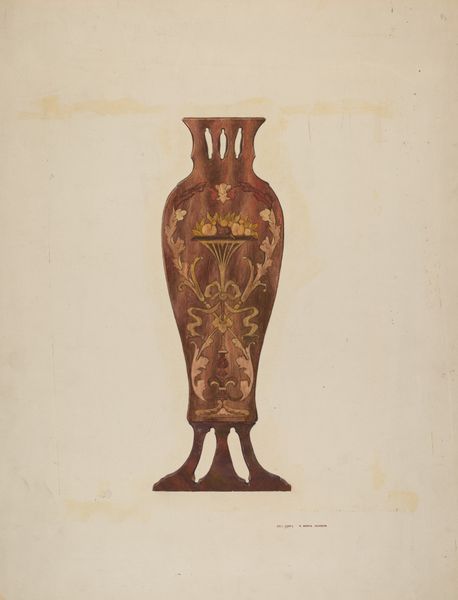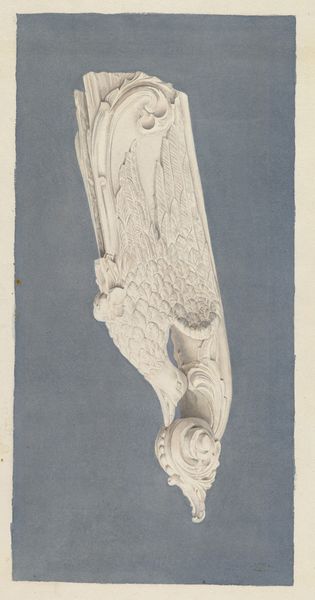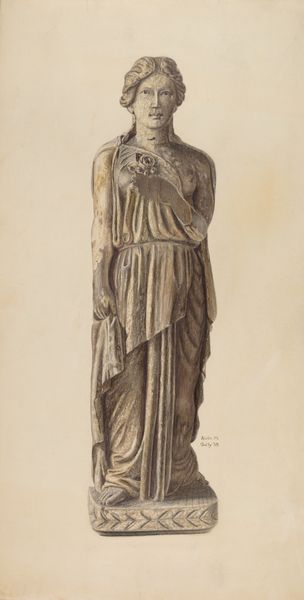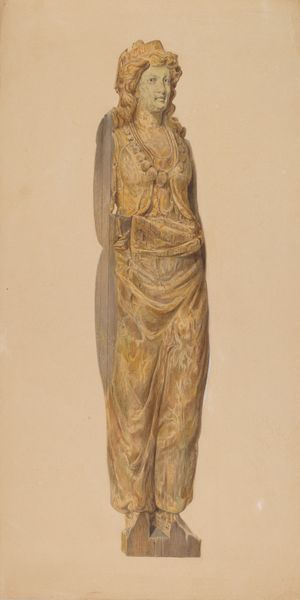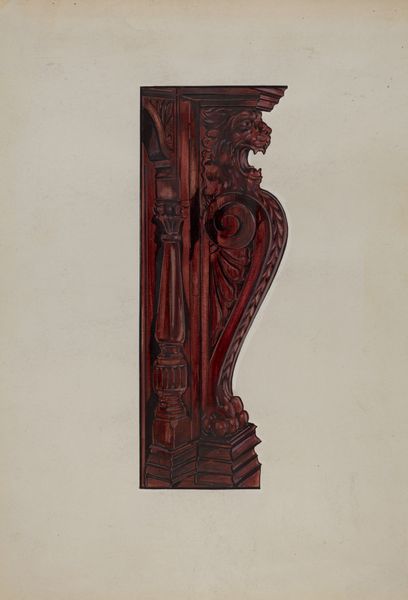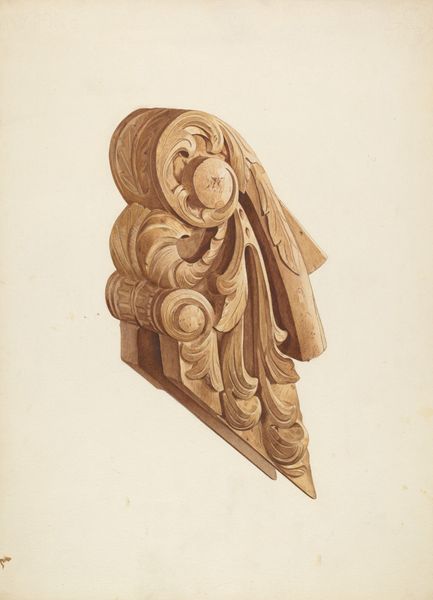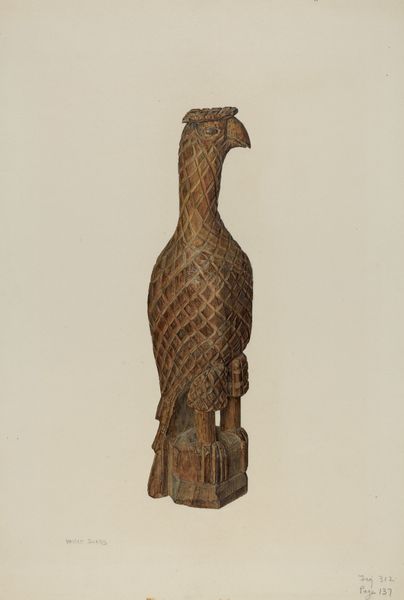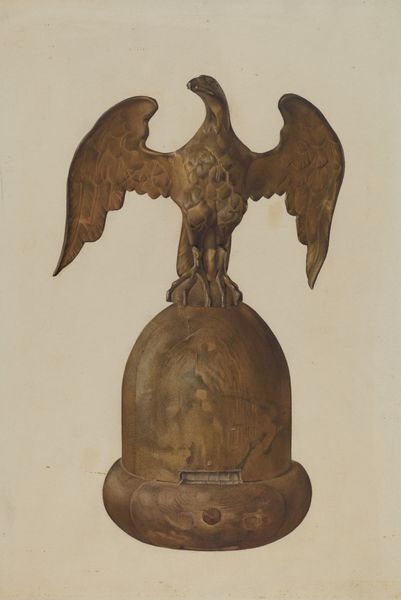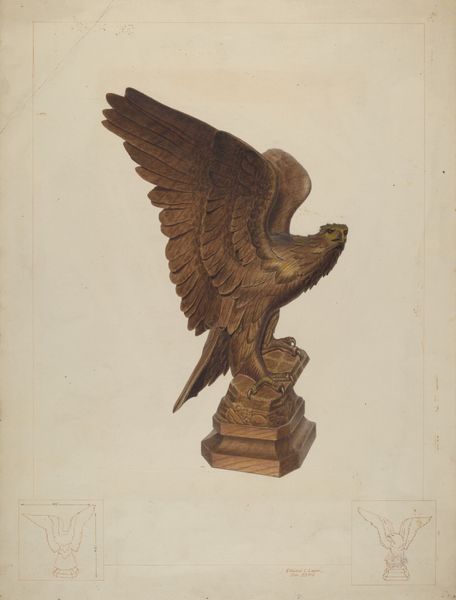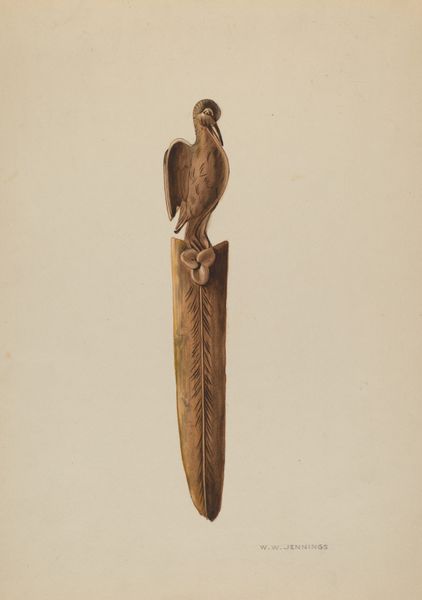
drawing, coloured-pencil, pencil
#
drawing
#
coloured-pencil
#
charcoal drawing
#
pencil drawing
#
pastel chalk drawing
#
pencil
#
decorative-art
Dimensions: overall: 36.8 x 28.6 cm (14 1/2 x 11 1/4 in.) Original IAD Object: 4" wide; 10 3/8" long
Copyright: National Gallery of Art: CC0 1.0
Editor: So, this is Harry Jennings' "Tie-back," circa 1939, made with pencil and colored pencil. It's a drawing of a decorative element. It strikes me as rather…stately, almost regal, but the color palette is surprisingly muted. What's your take on it? Curator: It's crucial to consider the materials Jennings employed. The deliberate choice of pencil and colored pencil, traditionally seen as "lesser" mediums compared to oil or bronze, suggests a particular agenda. Are we looking at a challenge to the established hierarchy between fine art and craft? Editor: Interesting! So, you're suggesting that the medium itself is making a statement? How so? Curator: Absolutely. Look at the decorative arts context. During the late 1930s, there was increasing interest in democratizing art and design, making them accessible to a broader public. Pencil and colored pencil were more affordable, easier to use and reproduce. The Tie-back, through its very materiality, might be aligning with that movement, celebrating accessible design and everyday artistry, even suggesting a move towards mass production. How might this fit into notions of class? Editor: That’s something to think about. I had initially just focused on what was depicted. Seeing the connection to a potentially radical perspective through such simple materials really changes how I view it. Curator: Exactly. This challenges traditional ideas around authorship, skill, and what is valued within a capitalist art market. We can interpret its inherent message by thinking about the physical work and its social background, together, influencing production and consumption. Editor: That’s fascinating; thank you. I see this work with completely new eyes now. Curator: A materialist perspective can really open up those avenues. Examining art by asking *how* it was made and *who* it was made *for*, as well as by looking at art through its socio-historical context, can expose how its meaning lives.
Comments
No comments
Be the first to comment and join the conversation on the ultimate creative platform.
